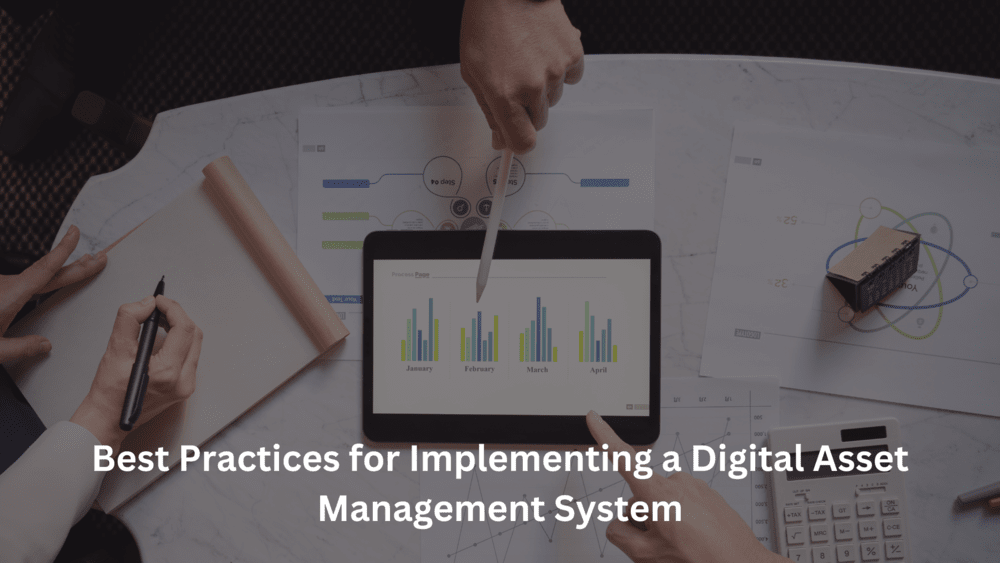Best Practices for Implementing a Digital Asset Management Syste

Digital Asset Management (DAM) has emerged as a cornerstone for businesses across industries. It's the centralized hub for storing, organizing, and managing digital assets like images, videos, audio, and documents. Implementing a DAM system can revolutionize how you manage your media library, enhance brand consistency, and boost productivity. However, a successful DAM implementation requires careful planning and execution. This blog delves into the best practices to guide you through the process.
Understanding the Importance of DAM
Before diving into implementation, it's crucial to grasp the significance of DAM in today's digital landscape. A robust DAM system offers numerous benefits:
- Centralized Repository: Consolidates all digital assets in one place, eliminating the chaos of scattered files.
- Enhanced Efficiency: Streamlines asset retrieval, reducing search time and improving productivity.
- Brand Consistency: Ensures brand guidelines are adhered to across all marketing materials.
- Improved Collaboration: Facilitates teamwork by providing a shared platform for asset sharing and management.
- Cost Reduction: Optimizes storage and reduces the risk of duplicate assets.
Key Steps for Implementing a DAM System
- Define Your Goals and Requirements:
- Clearly outline your organization's objectives for implementing a DAM system.
- Identify the types of assets you'll manage and the users who will access them.
- Determine the desired level of automation and integration with other systems.
- Conduct a Thorough Asset Audit:
- Inventory your existing digital assets, including their formats, sizes, and metadata.
- Assess the quality and relevance of your assets.
- Identify potential gaps in your asset library.
- Choose the Right DAM Platform:
- Evaluate various DAM solutions based on your specific needs, budget, and scalability requirements.
- Consider factors like user interface, integration capabilities, security, and pricing.
- Develop a Metadata Strategy:
- Create a comprehensive metadata schema to categorize and describe your assets.
- Use consistent and standardized metadata to improve searchability and discoverability.
- Establish User Roles and Permissions:
- Define different user roles based on their responsibilities (e.g., administrator, editor, viewer).
- Implement granular access controls to protect sensitive assets.
- Migrate Assets Efficiently:
- Develop a migration plan to transfer your existing assets into the DAM system.
- Ensure data integrity and accuracy during the migration process.
- Train Your Users:
- Provide comprehensive training to empower users to effectively utilize the DAM system.
- Offer ongoing support and resources to address user questions and concerns.
- Optimize Asset Delivery:
- Leverage the DAM system's capabilities to create different asset formats and sizes for various channels.
- Implement delivery workflows to automate asset distribution.
- Leverage Analytics and Insights:
- Track asset usage and performance metrics to optimize your DAM strategy.
- Use data-driven insights to identify trends and improve asset management.
Overcoming Challenges and Ensuring Success
Implementing a DAM system can be complex, but by following these best practices, you can overcome common challenges and achieve your desired outcomes. Consider the following tips:
- Involve Key Stakeholders: Ensure buy-in from all departments involved in asset management.
- Start Small, Scale Gradually: Begin with a pilot project to test the DAM system and refine your processes.
- Prioritize User Experience: Design the DAM system with user needs in mind to encourage adoption.
- Embrace Continuous Improvement: Regularly assess and refine your DAM strategy based on feedback and performance metrics.
Martech Adoption and DAM go hand-in-hand. By integrating your DAM system with other marketing technology tools, you can streamline workflows, enhance campaign performance, and gain valuable insights. For instance, you can integrate your DAM with a marketing automation platform to automatically deliver relevant assets based on customer segments.
Regularly conducting tech reviews of your DAM system is essential to staying up-to-date with the latest features and capabilities. This proactive approach ensures that your DAM system continues to meet your evolving business needs and delivers maximum value.
By following these best practices and leveraging the power of DAM, you can transform your digital asset management process, improve efficiency, and drive business growth.
- Art
- Causes
- Crafts
- Dance
- Drinks
- Film
- Fitness
- Food
- Игры
- Gardening
- Health
- Главная
- Literature
- Music
- Networking
- Другое
- Party
- Religion
- Shopping
- Sports
- Theater
- Wellness


